The cauliflower mushroom (Sparassis sp.) is a relatively uncommon find and a top prized edible species. It’s also bizarre looking – it looks like someone dropped a pile of ruffled lasagna noodles in the forest. Or, a cluster of flat coral. Or, a large cauliflower vegetable head when you cut it in half. This species has very few lookalikes, and finding it is a reason to dance in the forest!
These are often large mushrooms, averaging six to twelve inches in both width and height, which is another reason they’re such a great find. You’ll get a good meal, or two or three, out of one cauliflower mushroom.
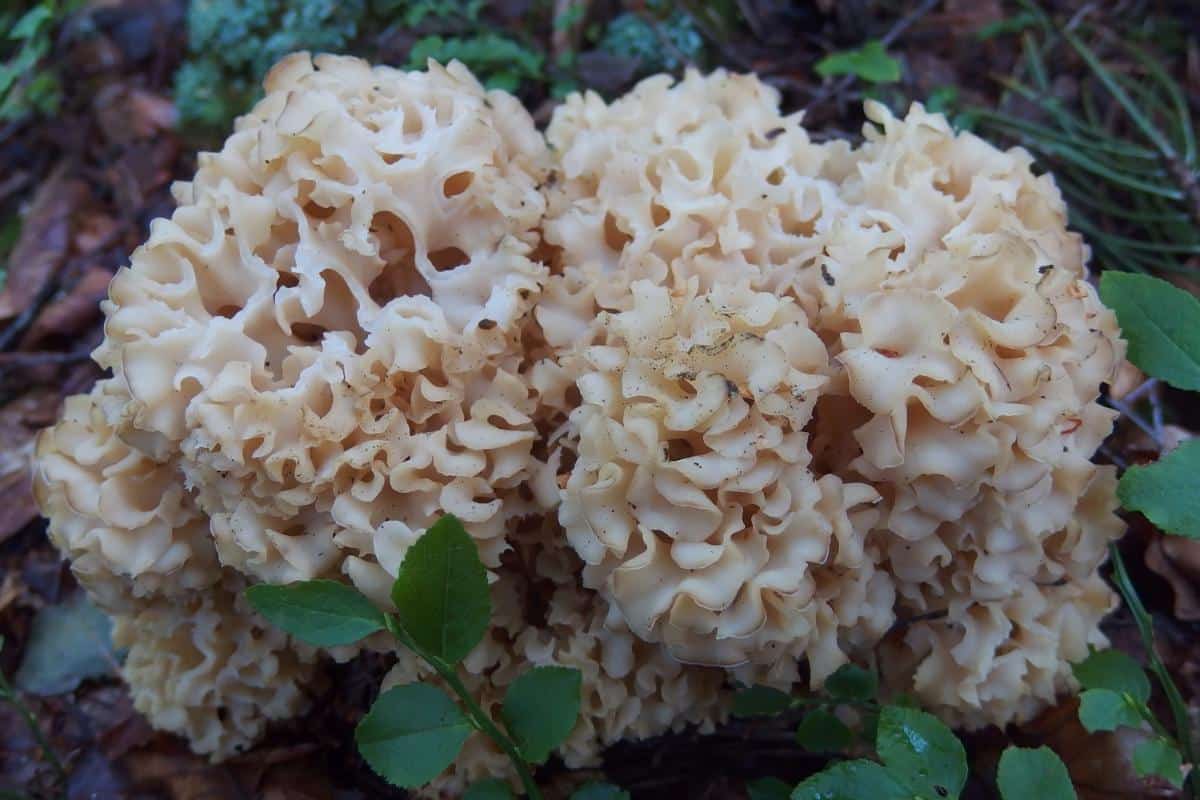
You’ll find them between December and early March in California and parts of the PNW, and from September through November in most other parts of the country. Foragers and chefs prize these mushrooms for their “meaty” quality, which is reminiscent of morels. They make delicious “steaks” and other tasty dishes that show off their unique texture and flavor.
These mushrooms are also known as Noodle mushrooms, Wood cauliflower, and Rooting cauliflower mushrooms, cauliflower of the woods, silver ear, snow ear, and cauliflower fungus. The Chinese nickname is “Sunshine Mushroom.”
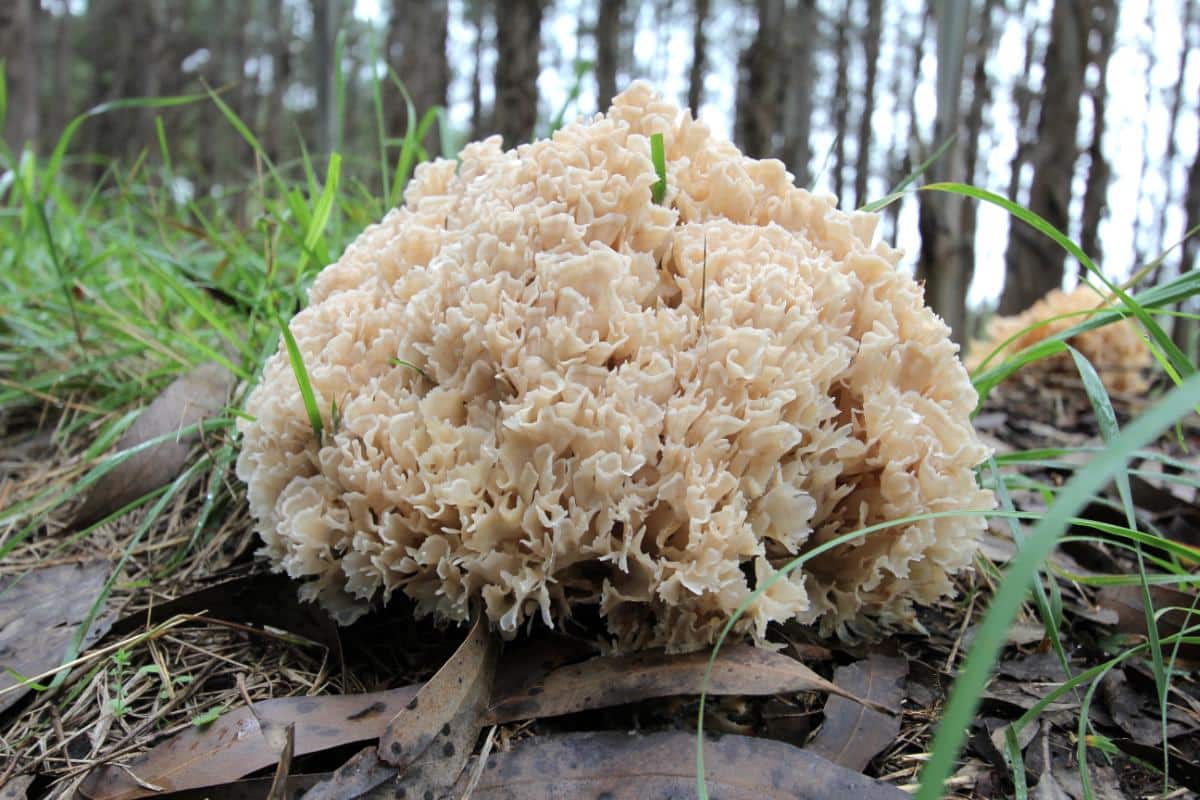
Jump to:
- What Is The Cauliflower Mushroom?
- How To Get Cauliflower Mushrooms
- How To Choose Cauliflower Mushrooms
- How To Store Cauliflower Mushrooms In The Short Term
- How To Clean Cauliflower Mushrooms
- How To Cook Cauliflower Mushrooms
- Preserving Cauliflower Mushrooms Long-Term
- Common Questions About The Cauliflower Mushroom
What Is The Cauliflower Mushroom?
The cauliflower mushroom is in the Sparassis genus. Its name comes from how much it looks like a head of cauliflower when it is cut in half. These mushrooms don’t have caps and gills like other mushrooms. Instead, they form clusters of frilled, leaf-like branches that grow from a single base.
These mushrooms vary widely in size, but they often get quite large, especially on the West Coast. Most measure between 4 to 12 inches across. Some incredible finds have been up to 24 inches wide! The cauliflower mushroom is made up of many flat, wavy lobes that twist and overlap. They look just like a pile of lasagna or egg noodles scattered on the forest floor.
The cauliflower name comes from what the cross-section of this species looks like. When you cut it in half, the inside looks very much like the inside of a cauliflower. From above, though, it looks a lot more like a pile of noodles.
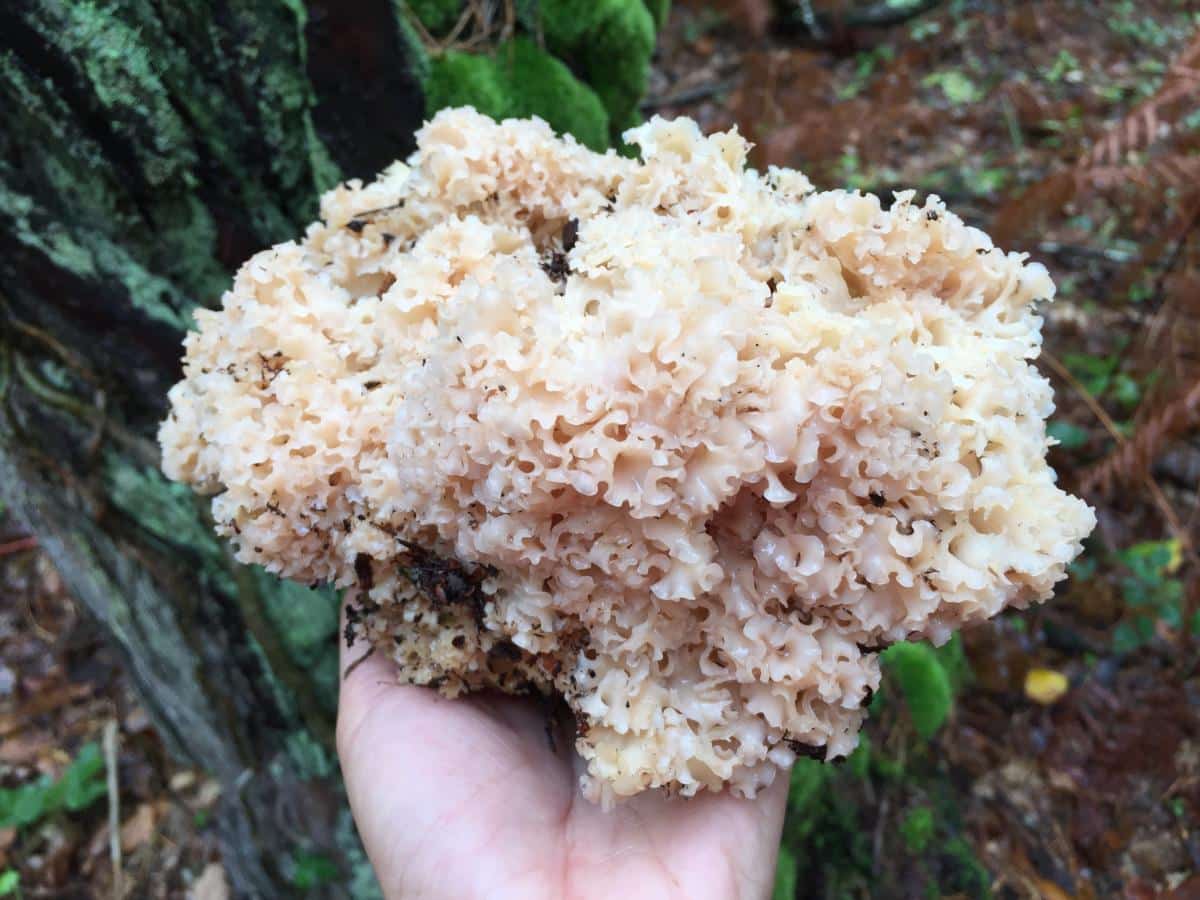
Their colors vary from ivory to pale yellow to white as they mature. The flesh is brittle, semi-firm, and chewy with strong, earthy, and musky scents. With age, the mushrooms turn into large frilly masses. The texture becomes softer as the mushroom matures, and more gaps appear between the curly “petals”.
There are several species of cauliflower mushrooms in North America. All of them are edible and look pretty similar, but there are differences. The main problem people face when looking for this popular edible species is finding it. They aren’t rare or in danger of disappearing, just not very common. They are found all over North America, but they are not easy to find.
- Sparassis americana: This species grows in eastern North America with pine trees. It looks like a classic cauliflower mushroom with noodle-like fronds and white to cream-colored flesh.
- Sparassis americana var. arizonicus: Looks exactly like S.americana except it grows in the Southwest with ponderosa pines.
- Sparassis radicata: This cauliflower mushroom grows in western North America, especially the Pacific Northwest from fall through winter. It grows with conifers, specifically Bishop and Monterey pines and Douglas fir, and is like whitish noodles on the forest floor.
- Sparassis spathulata: A cauliflower mushroom with more spatula like fronds — they don’t look like noodles as with the other species. This one grows east of the Great Plains with hardwoods and pine. and
- Sparassis crispa: All cauliflower mushrooms in North America used to be lumped into this name. It’s now known that this is primarily a European species. You may still see this name in guidebooks, though.
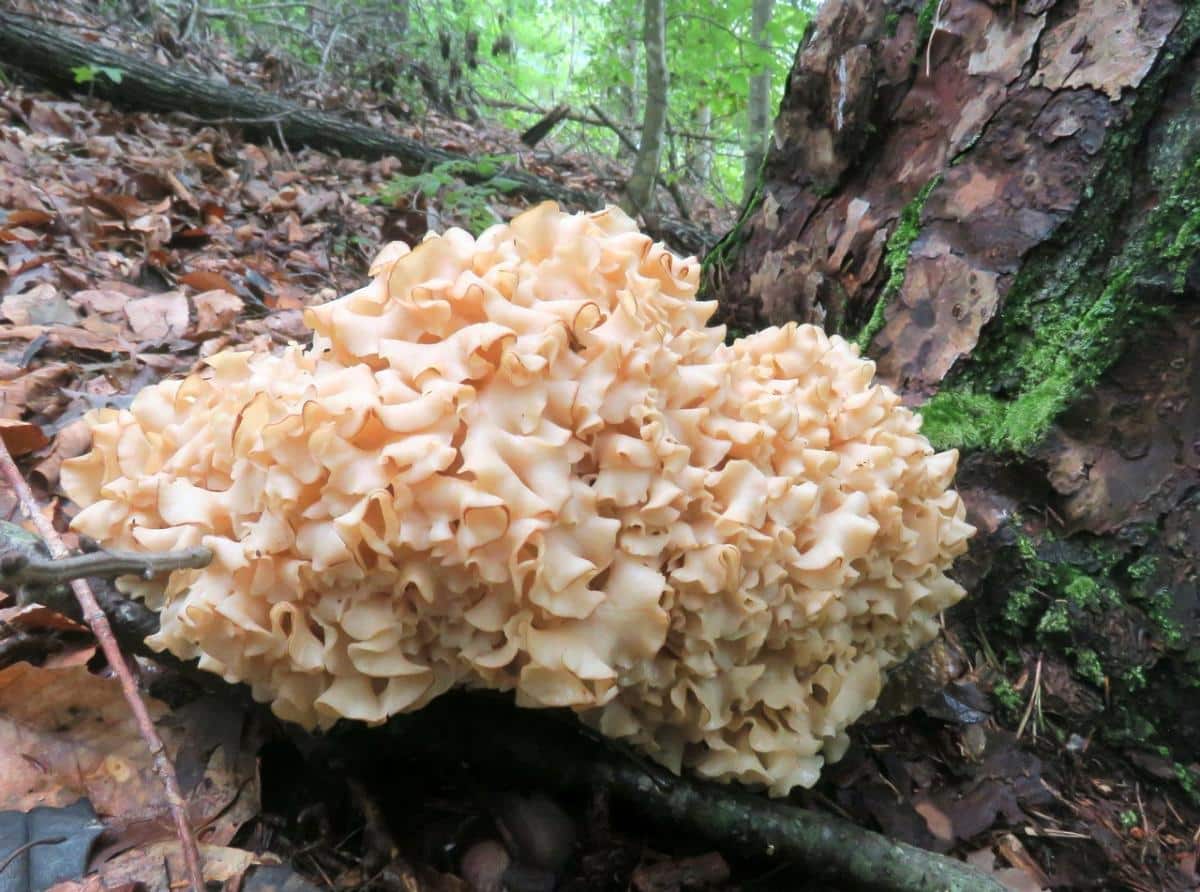
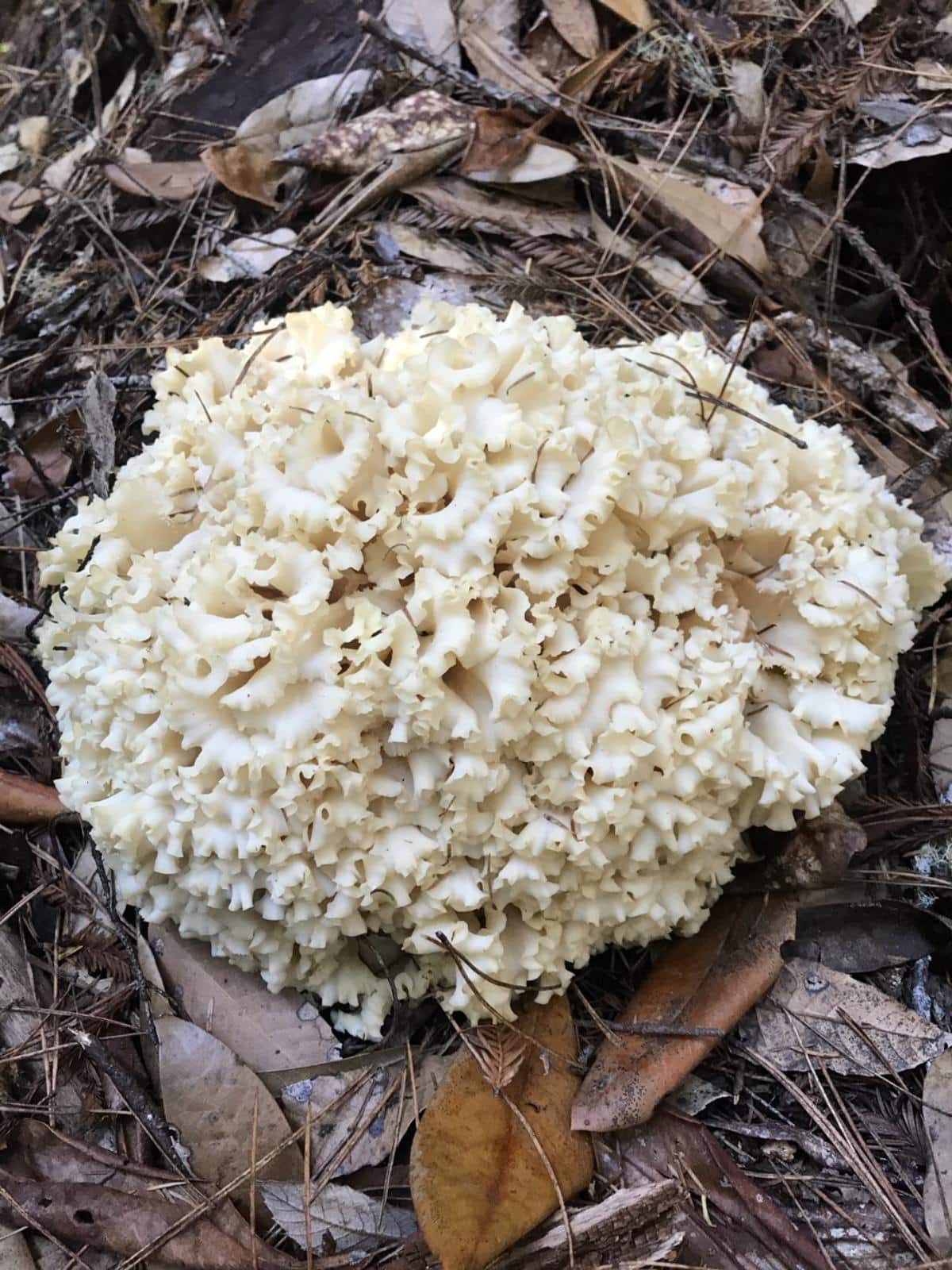
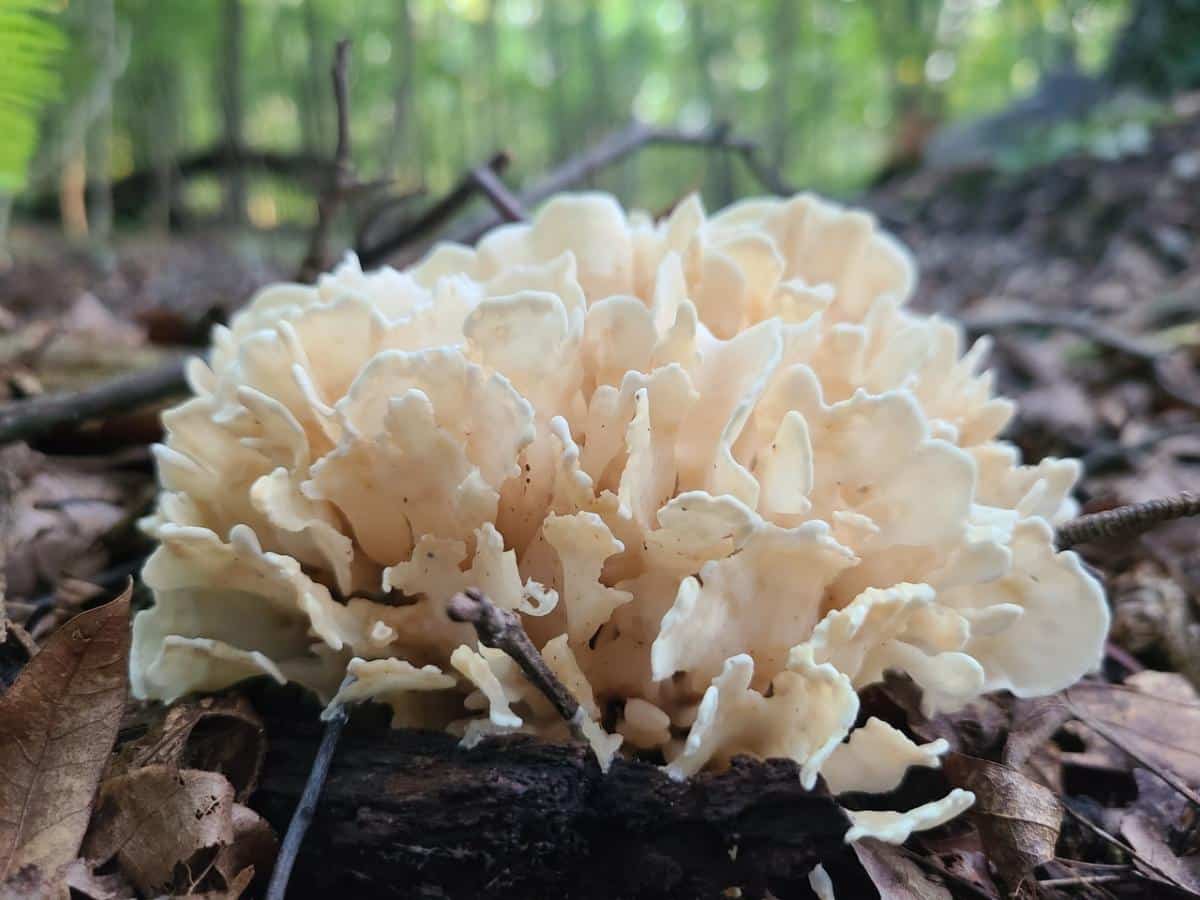
Chefs love these excellent edible mushrooms. They bring a neutral, earthy taste with subtle nutty hints of fennel and almond after cooking. Their texture feels like al dente pasta, which makes them a treat to cook with. These mushrooms work great in soups, stews, and stir-fries.
These mushrooms often have pine needles or debris stuck in their folds—that’s just natural. A good cleaning before cooking is essential.
How To Get Cauliflower Mushrooms
Cauliflower mushrooms can be grown, but it is complicated and often not successful. Because they form relationships with specific trees, it can be difficult to duplicate that. The best way to get these mushrooms is to forage them or become really (really!) good friends with a forager. Because this isn’t a widely common species, foragers tend to treasure and hold onto them.
Foraging
Cauliflower mushroom season depends on where you live. In the Pacific Northwest and Eastern US states, they appear from September through November. Peak growth is in October. Foragers in Southern Appalachia might spot them between June and November. In milder California, the season lasts from September to January. The season is shorter in the southwestern states, running from June to September during the monsoon season.
These mushrooms grow at the bases of trees, especially near conifers. Scots Pine is their favorite host, though they also appear under Sitka spruce and other cone-bearing trees. They are also occasionally found with oak trees. The cauliflower mushroom never grows on trees or wood; it is at the base of the tree or near the base, feeding off the tree’s roots.
The mushrooms build complex relationships with their host trees. They feed on both living roots and dead material. Old forests with weak or sick trees are prime places to look for the cauliflower mushroom. They are known to pop up along forest edges or roads, so don’t limit the search to the woods.
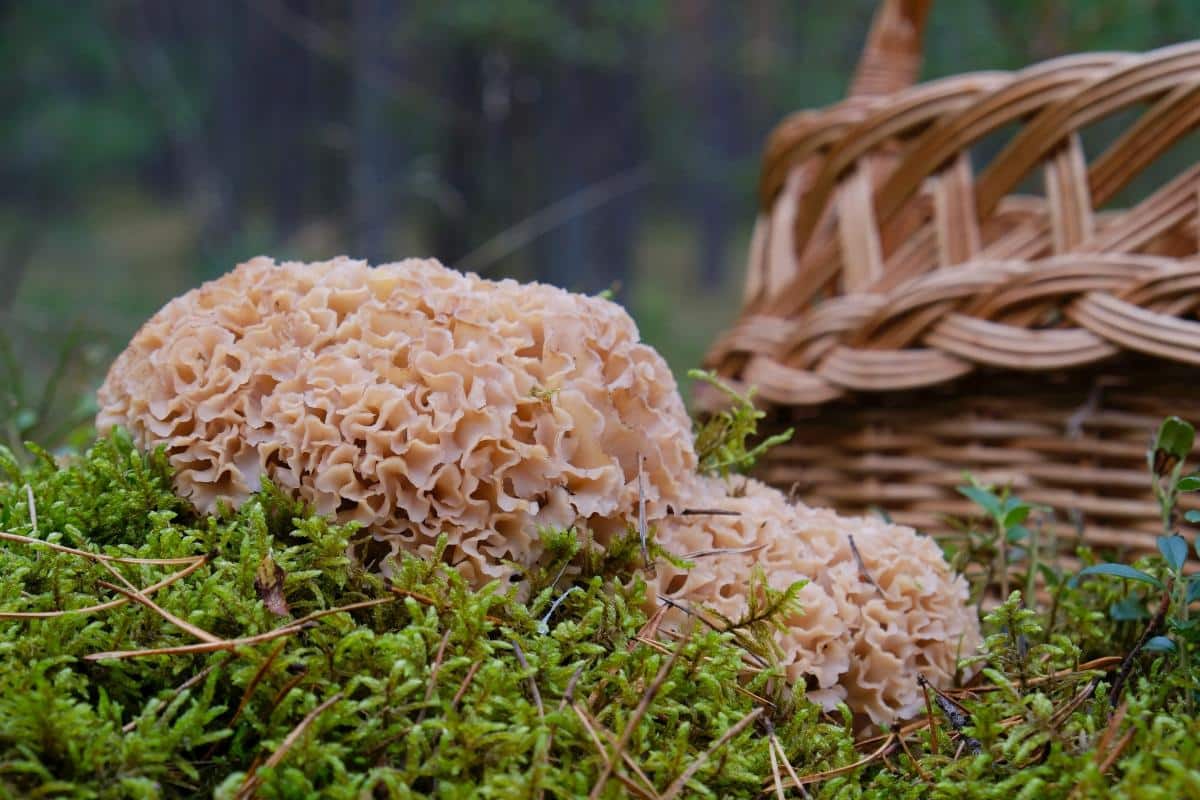
Cauliflower mushrooms are hard to miss since they’re often quite large, bright white to cream colored, and look like coral or bunched egg noodles near tree bases. The younger mushrooms are clustered tightly and white. As they age, they spread into frilly masses and turn tan or light brown. Their sweet, woodsy scent is reminiscent of fresh flowers or honey.
These mushrooms often return to the same spots year after year, sometimes for decades, so be sure to mark the spot if you do find them! They are slowly killing the trees, but they aren’t aggressive, and it can take a long time.
As with all mushrooms, it’s best to do a little field prep before adding them to your basket. This reduces the dirt and insects brought home and makes the cleaning a bit easier. For the cauliflower mushroom, cut it at ground level and shake it upside down. This helps dislodge pine needles, creatures, and anything else that might be hiding in the folds.
For more details about foraging the this mushroom, check out our guide Cauliflower Mushrooms: Identification, Foraging, and Cooking.

Growing
The cauliflower mushroom feeds on the root zones of mature conifer trees. If you have a pine or other conifer forest, you can try inoculating the roots with the fungus. Some people have experimented with using this mushroom to remediate pine forests after clearcuts or intensive logging. It prefers to grow from inoculated logs buried in the ground. Or, it will also grow on fresh pine stumps. It can also grow on sawdust substrate, but in general, it is a difficult mushroom to cultivate.
Several companies sell cauliflower sawdust spawn and liquid culture. Be sure to only buy from reputable sellers. This is already a tough mushroom to grow, and you don’t need to make it harder for yourself by getting questionable cultures and spawn.
Buying
Fresh cauliflower mushrooms are available from several wild mushroom harvesters online if you can’t forage or grow them. The West Coast harvest runs from summer through late fall, and it is also possible to find the fresh mushrooms at farmers’ markets during that time.
Another option is to find the mushrooms dried. Many specialty Asian markets will have these mushrooms dried.


How To Choose Cauliflower Mushrooms
Knowing what to look for will help you pick between an amazing find and a disappointing one. The best cauliflower mushrooms are creamy white to light yellowish with frilly clusters that look like egg noodles or ruffled lasagna noodles. Their folds should be tightly to mostly packed, and the cluster will have wavy ridges that create an intricate folded pattern. The young specimens are the best, unsurprisingly. With age, they turn tan to brown and lose quality and flavor.
Stay away from any cauliflower mushroom that turns brown when you cut them in half, since this shows they’re past their prime. Make sure to look for any slime, which means they’ve gone bad. If the mushroom has a strong, unpleasant, or sour smell, leave it in the woods. Fresh, good quality cauliflower mushrooms smell flowery and sweet.
The tips of the clusters become crumbly and fragile as they age, which means lower quality. Watch out especially for dark spots, bruises, or mushrooms that look dull overall.
A great cauliflower mushroom should have firm flesh that you can slice easily and that keeps its shape while cooking. The texture feels like a dense sponge—both rubbery and firm. The smell is sweet, woodsy and reminiscent of fresh flowers or honey. When you cut it open, it should be pure white inside with no discoloration.
Check the mushroom’s base for holes where it touches the ground, since these often mean bugs have moved in. The perfect cauliflower mushroom should look fresh, feel solid, and give off a nice, sweet, nutty smell.


How To Store Cauliflower Mushrooms In The Short Term
Cauliflower mushrooms have many folds that catch dirt, debris, and tiny creatures like millipedes and earwigs. They should be cleaned right after you pick them to stop spoilage from trapped moisture and contaminants. Dirty, larvae-filled mushrooms go bad quickly. Clean cauliflower mushrooms last 4-5 days in the fridge, while dirty ones only stay fresh for 1-2 days. The edges of the cauliflower mushroom will turn yellow as it gets older, but it is still safe to eat.
***Different foragers and chefs have varied opinions about the best ways to store cauliflower mushrooms. We recommend cleaning before short-term storage, but it may not be absolutely necessary. Some chefs refrigerate straight away without cleaning, and report that it will be good for up to a week. It may depend on the species, as some are more rugged than others. The flat coral ones tend to be hardier.
Store the mushrooms in a paper bag in the refrigerator. Do not store them in plastic, as this causes moisture to accumulate, and they start deteriorating and decomposing quickly.
Many people advise against soaking mushrooms because they absorb a lot of water. While this is true with many mushrooms, it is not a problem with the cauliflower fungus. Cauliflower mushrooms don’t soak up water easily. A deep cleaning with water won’t hurt their quality or texture.
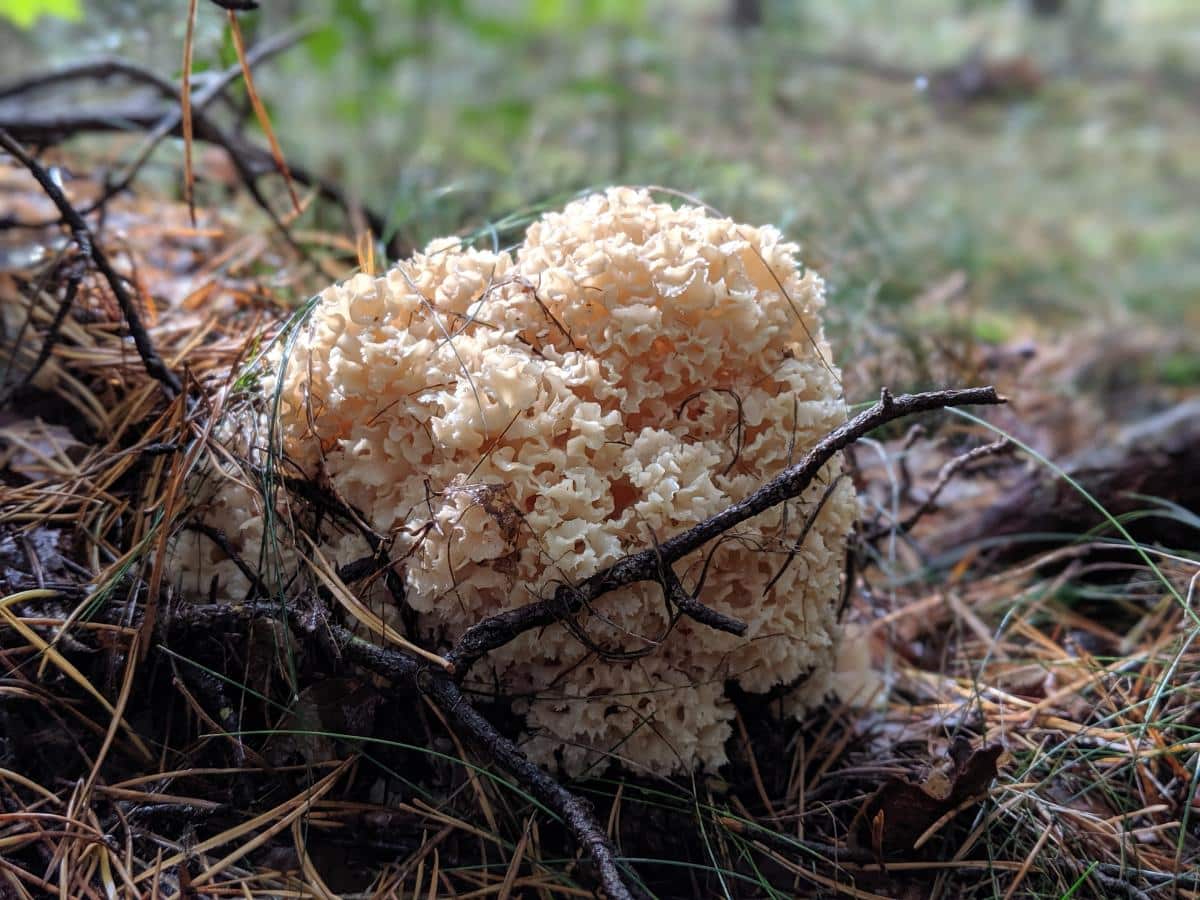
How To Clean Cauliflower Mushrooms
The intricate structure of a cauliflower mushroom makes cleaning quite challenging. Its many nooks and crannies require careful attention to make sure there are no twigs, leaves, or bugs hiding within. You’ll also want to examine the mushroom carefully and remove any dark or slimy sections that smell odd.
If you break down the mushroom into smaller pieces, it helps a lot with the cleaning process. This is especially true with very large specimens. You’ll probably have to look over the ruffled layers several times to ensure you get out all the debris and bugs.
The best way to clean the cauliflower mushroom is gently with a soft-bristle brush or your fingertips. The flesh is very delicate and won’t hold up to vigorous scrubbing. A sharp, pointed knife or toothpick is a good way to get stubborn bits stuck deep in the folds.
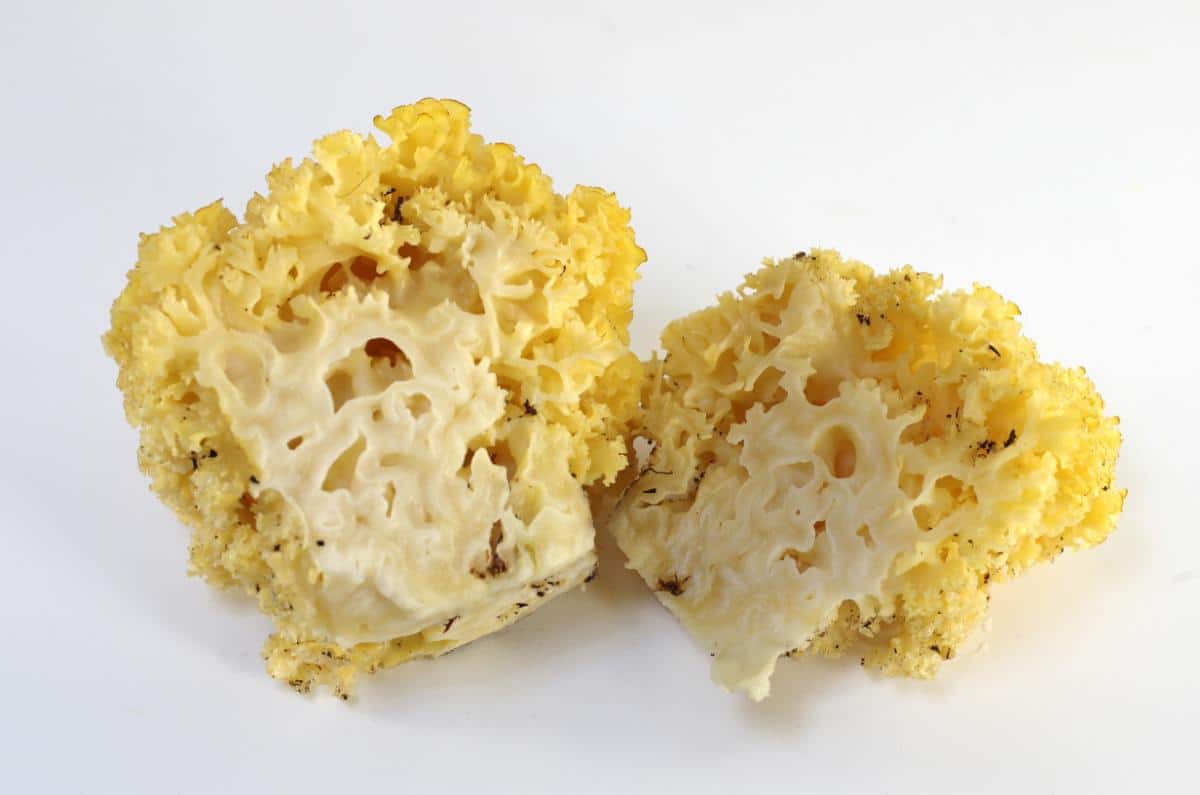
The good news is that cauliflower mushrooms don’t soak up a lot of water, so quick washing won’t harm their texture like it does with so many other mushroom species. You can absolutely soak these mushrooms, and it can be very helpful to get more debris out of the folds by swishing the mushrooms around.
If there are lots of bugs hiding out, put the mushrooms in a saltwater soak. This helps get the insects and larvae out of the folds of the mushroom. Be sure to check the base where it grew for holes that show insect damage.
Step-by-Step Cleaning Of The Cauliflower Mushroom
- Look the mushroom over and remove any large, easy-to-remove twigs, needles, and other debris.
- Check the base of the mushroom for insect holes and cut off any bad pieces.
- Remove any dark or slimy sections
- Cut the mushrooms into palm-sized sections to make them easier to clean
- Fill a large bowl with cold water and submerge the mushroom pieces. (You can use a saltwater soak here if bugs are an issue)
- Swirl the mushrooms in the water gently but firmly to get more debris out from between the folds. Pull the layers apart to find hidden dirt and insects.
- Use your fingertips or a soft brush to rub off stubborn dirt. A toothbrush is great for this. (You can also wash them under strong running water to remove tough dirt.)
- If there is still debris stuck to the flesh, use a toothpick or a knife point to dig it out.
- Rinse the mushrooms well, then pat each piece dry with a clean kitchen towel or paper towels.
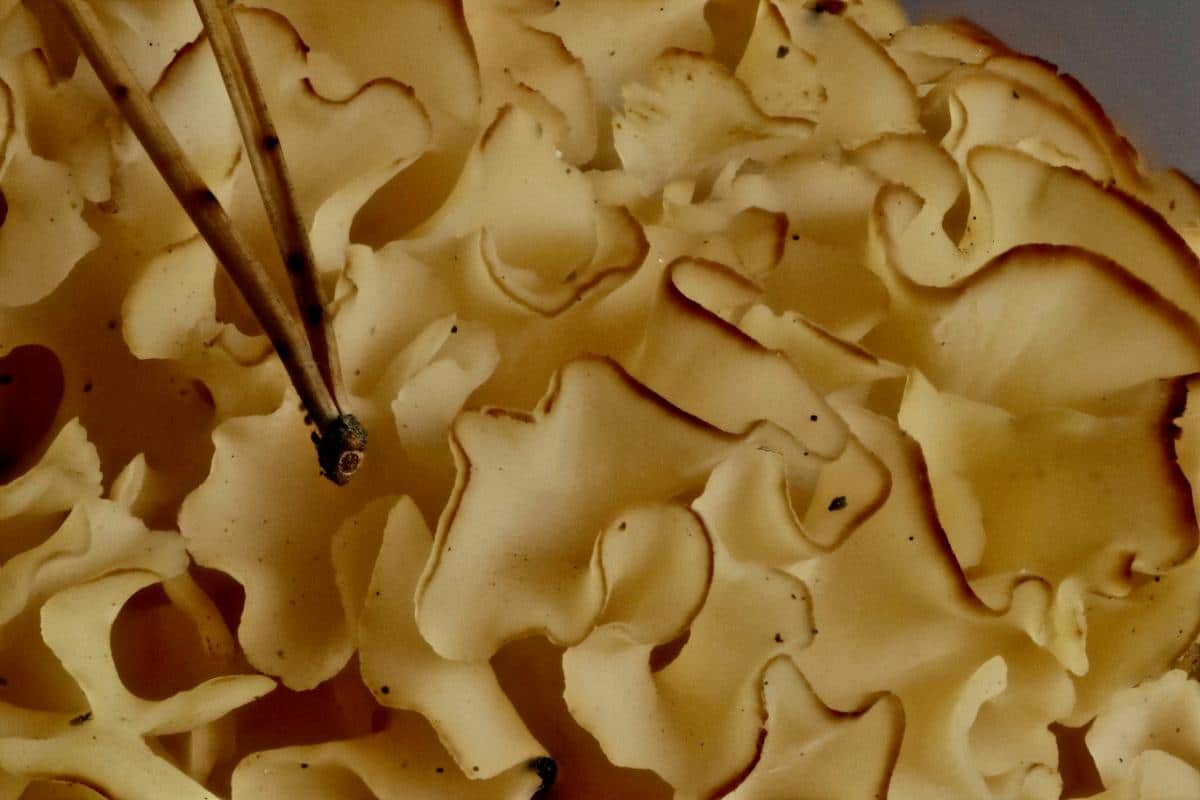
How To Cook Cauliflower Mushrooms
These fungi have a mild flavor like morels and a texture that resembles al dente pasta. This combination makes them versatile ingredients in many dishes and a lot of fun to cook with.
These mushrooms need careful cooking because of their fragile texture and high moisture content. When they’re cooked at high heat for too long, they release too much water, and you’ll be serving them in a puddle. Move the mushrooms around the pan as they sauté to achieve even browning.
To reduce some of the moisture before cooking, let the washed mushrooms dry on towels for a few hours first. Or, very gently squeeze the moisture out as best as possible.

It’s best to cook cauliflower mushrooms as soon as possible after foraging. They are often riddled with bugs, and their quality deteriorates quickly. They can be stored in the refrigerator in a paper bag for a short time, but in general, plan on preparing them within a couple of days.
Cauliflower mushrooms are a bit crunchy, similar to al dente noodles. They wilt and lose their shape when cooked, so it’s important to keep this in mind when preparing them. They will not hold their shape and generally turn into a soft, noodly mass. Their taste is earthy and a bit nutty, but overall it is mild.
Because of their resemblance to noodles, some people use them in place of noodles in pasta dishes. This also makes them perfect for noodle soups and other dishes where that texture is appreciated.
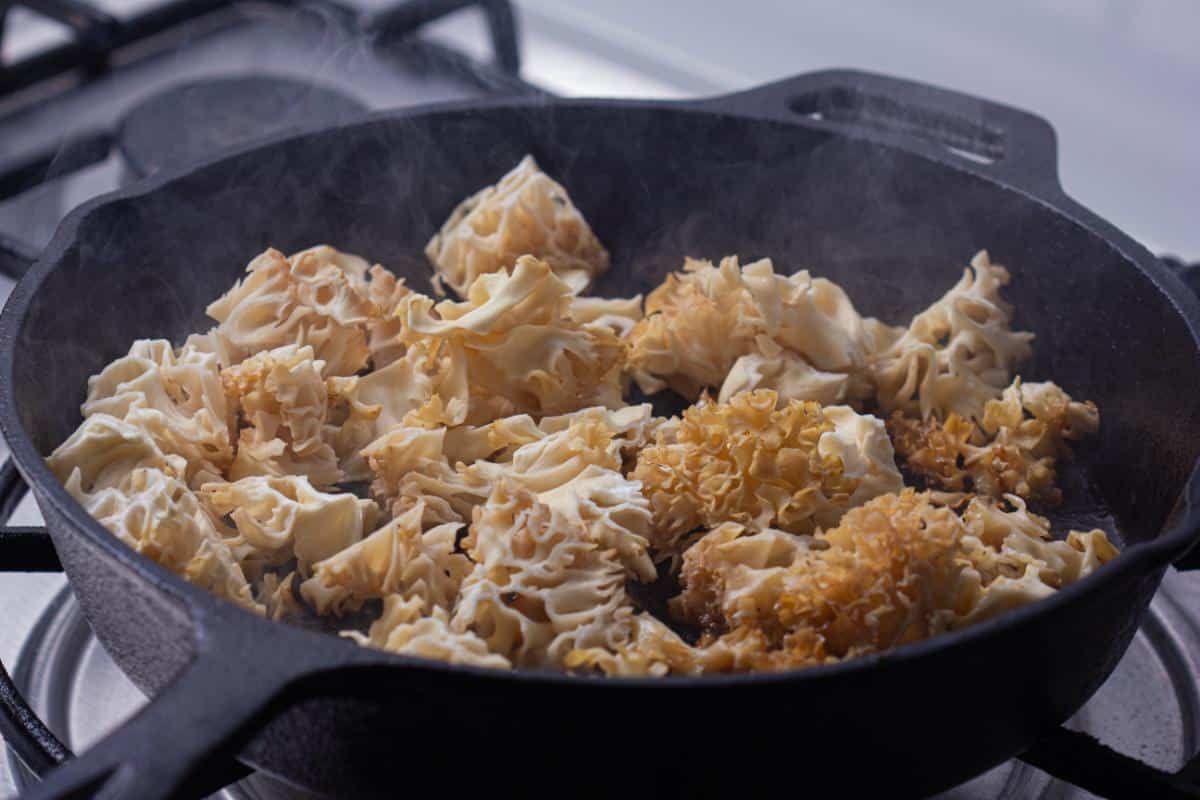
Dry sautéing
The dry sautéing method works really well with cauliflower mushrooms. Dry sautéing is cooking the mushrooms without oil for the first few minutes, so they release moisture. Dry sauteeing is a great option because if you cook them straight away with oil, butter, or broth, you’ll end up with a very watery dish.
Start by heating a cast-iron skillet over medium heat without oil. Add the mushroom pieces and let them cook until they release water and the moisture evaporates. Add oil and salt only after the water evaporates, then continue cooking until the edges brown.
Pan-searing
You can prepare cauliflower mushrooms just like a piece of meat to create a “steak”. This method is a two-step process. First, steam the mushrooms for 3-5 minutes. Then, sear them in a pan. Press them flat in a hot skillet and add butter or olive oil. Cook each side for about 1-2 minutes until golden. Watch the cooking time carefully since the mushroom shrinks quite a bit.
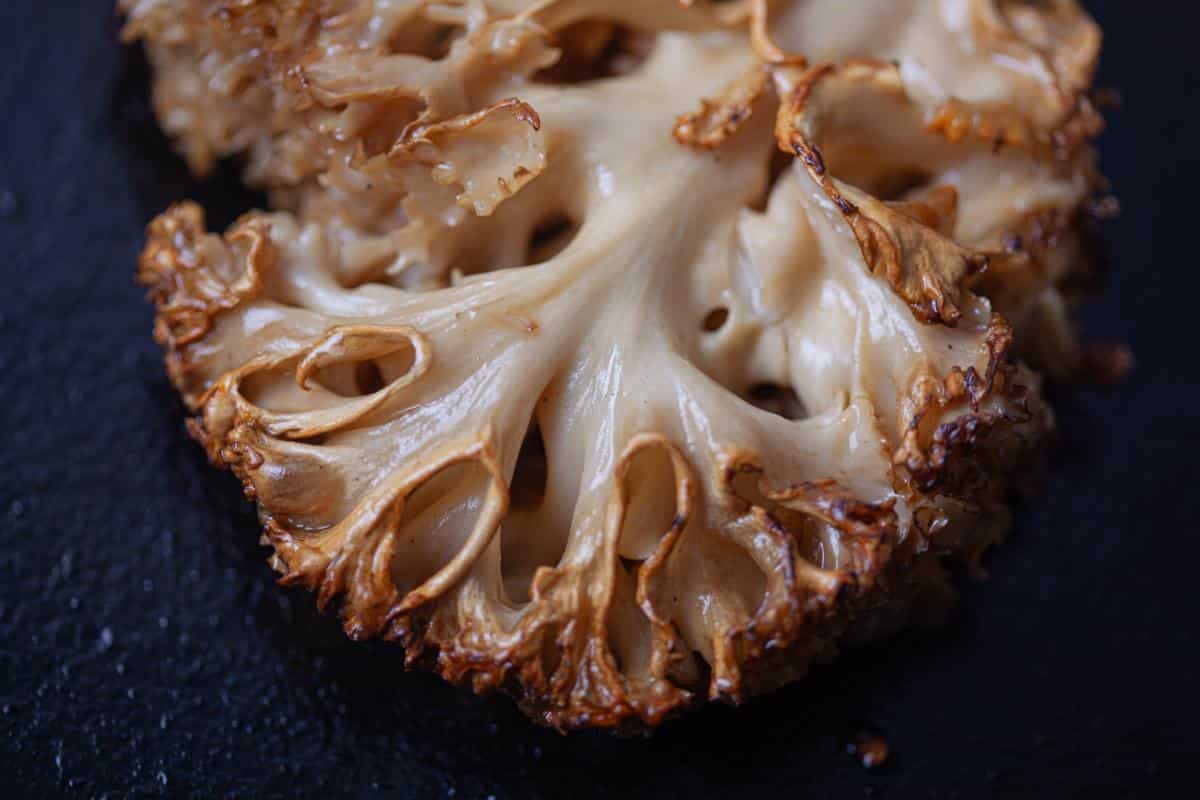
Deep frying and tempura
Deep-fried cauliflower mushrooms are delicious, especially when coated in tempura batter. A light batter of flour, egg, and ice-cold carbonated water creates that classic crispy tempura texture. Make sure the mushroom is completely dry before coating it in flour, dipping it in beaten egg, and covering it with breadcrumbs. Use 400-degree oil and fry until crisp and golden brown.
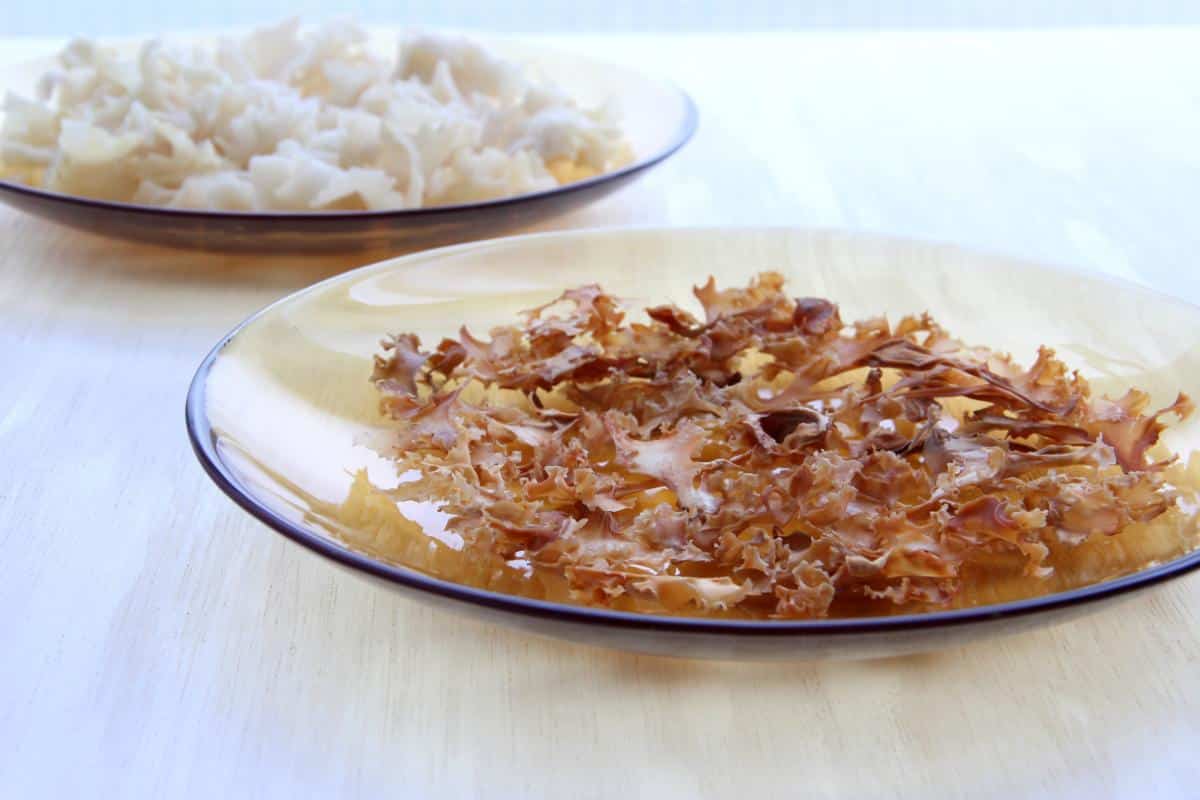
Soup and broth
Cauliflower mushrooms are excellent in soups and stews because they have a noodle-like texture. This fits perfectly in brothy Asian-style soups like ramen or pho. Just tear the mushroom into pieces and let it simmer in broth for 5-10 minutes until tender. You can also blend it with regular cauliflower florets to create a velvety, creamy soup.
Our Favorite Cauliflower Mushroom Recipes:
- Cauliflower Mushroom Steaks
- Sichuan Pickled Sparassis
- Hot and Sour Cauliflower Fungus Soup
- Asian-inspired Cauliflower Mushroom
- Cauliflower Mushrooms And Wild Mushroom Gratin
- Cauliflower Mushroom Quiche
- Cauliflower Mushroom Parmesan Crisps
- Cauliflower Mushroom Pasta with White Wine Sauce
- Cauliflower Mushroom in Spicy Peanut Sauce
- Cauliflower Mushroom Egg Drop Soup
- Cauliflower Mushroom Carbonara

Preserving Cauliflower Mushrooms Long-Term
Cauliflower mushrooms can be preserved in several ways.
Freezing
Freezing is one of the most effective methods for preserving cauliflower mushrooms. It’s best to cook them first before freezing. When they’re frozen raw, they become mushy when rehydrated. They can be cooked in a dish or on their own before being frozen.
Clean the mushrooms thoroughly, removing any pine needles, insects, or debris from their nooks and crannies. Tear into bite-sized pieces and allow to dry completely.
For best results, cook before freezing using one of these methods:
- Sauté method: Sweat them in butter, cool completely.
- Steam method: Steam the mushroom pieces for about 3-5 minutes (similar to other mushrooms).
Put the cooked mushrooms in zip-top bags or vacuum-seal them. Leave ½-inch headspace in the containers, seal tightly, and freeze.
Drying
Drying cauliflower mushrooms preserves them while concentrating their flavor. This is an excellent option if you’ve found a massive cauliflower mushroom or multiples of them!
Dehydrator
- Clean the mushrooms thoroughly, then cut them into uniform pieces.
- Layer the mushroom pieces in a food dehydrator.
- Set it to 125-135°F and dehydrate until completely crisp.
Air Drying
- Clean the mushrooms thoroughly, then cut them into uniform pieces.
- String them on a thread and hang them in a well-ventilated, warm, dry area.
- Once fully dried, store in airtight containers in a cool, dark place.
Rehydrate the mushrooms when needed by soaking them in warm water for 20-30 minutes.
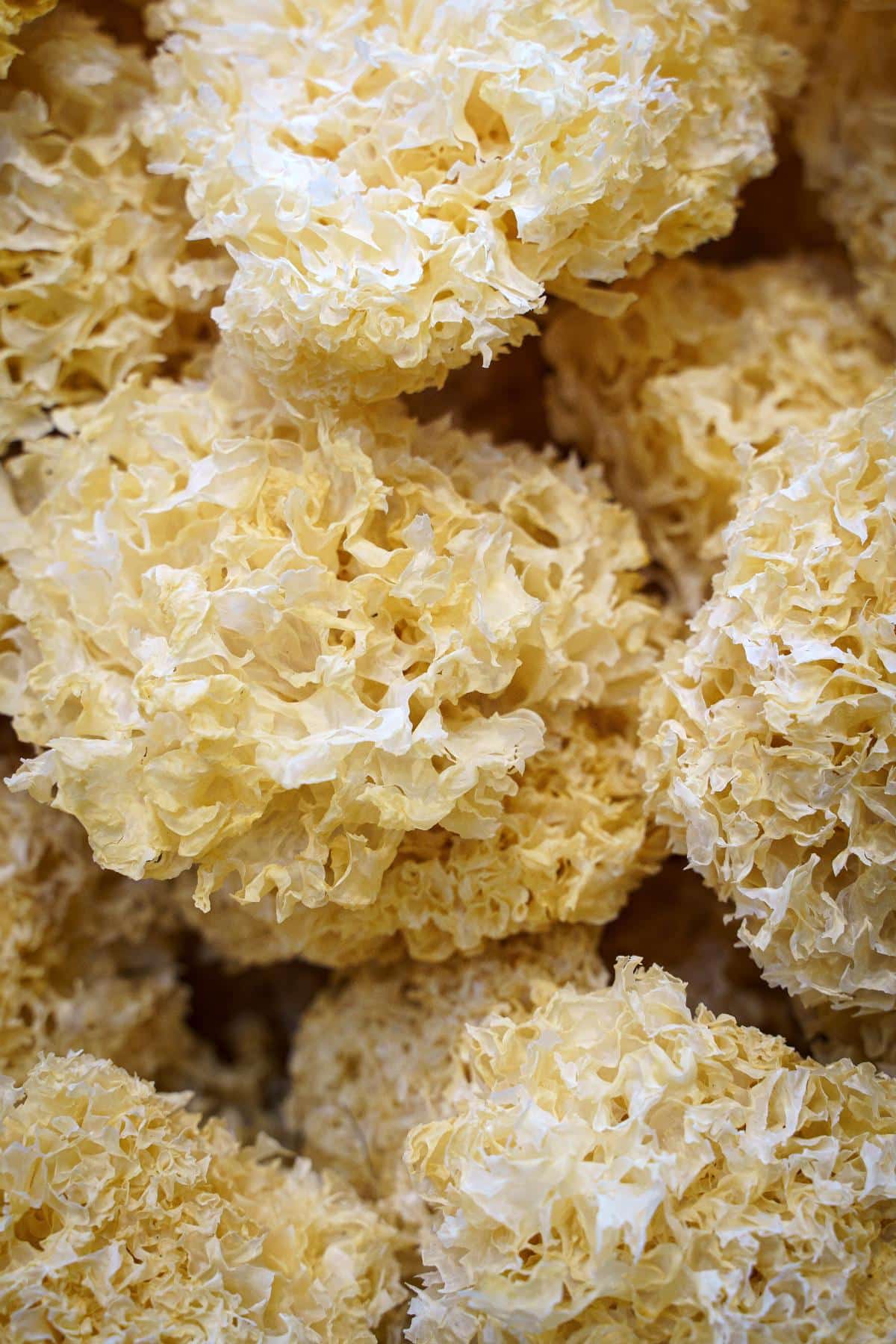
Pickling
Pickling preserves the unique texture of cauliflower mushrooms and is a unique and special treat.
- Clean the mushroom pieces and blanch them for 3-5 minutes.
- Create a pickling solution with vinegar, water, salt, and desired spices.
- Pack the mushrooms in sterilized jars and cover with the hot pickling liquid.
- Process in a water bath canner or refrigerate for refrigerator pickles.
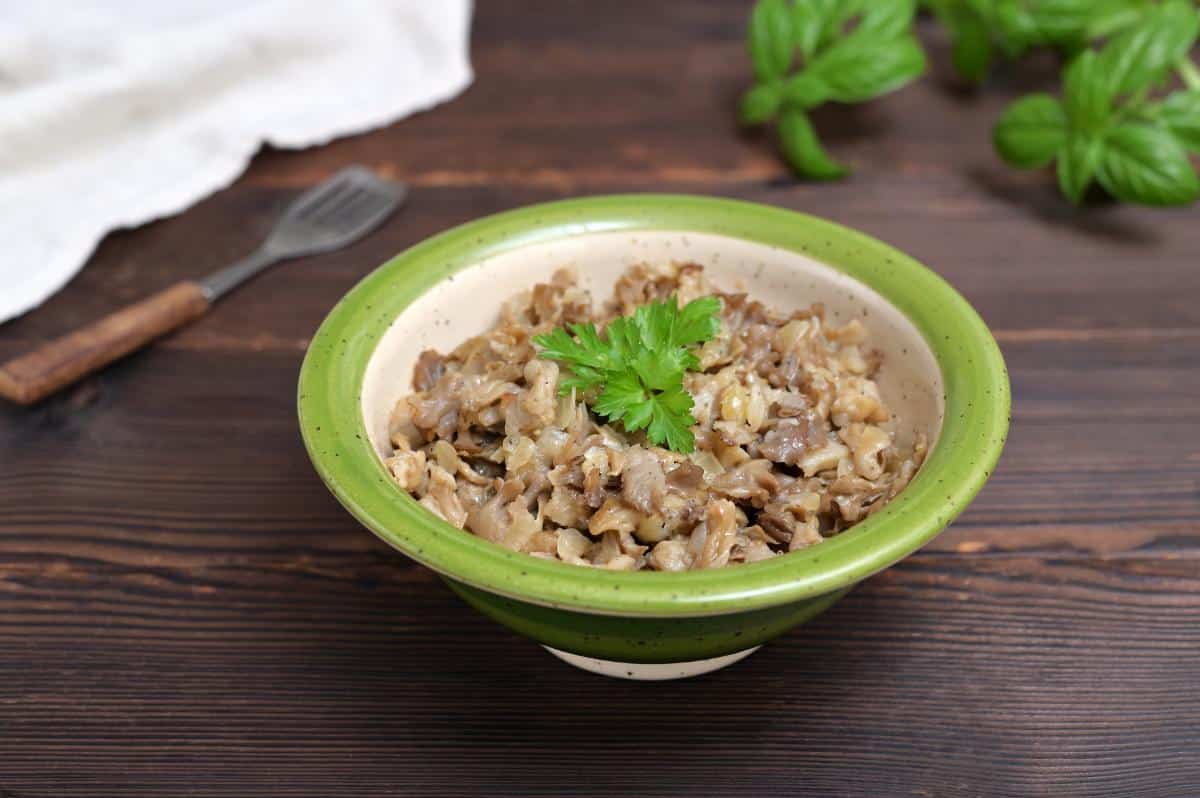
Common Questions About The Cauliflower Mushroom
What’s the best way to cook cauliflower mushrooms?
There are several great ways to cook cauliflower mushrooms. They can be sautéed, fried, added to soups, and pan-seared. These mushrooms also freeze well or can be dehydrated.
Where can I find cauliflower mushrooms?
Cauliflower mushrooms typically grow at the base of mature trees. They prefer conifers like pines. The best season for foraging is usually from September through November, with October being the peak month in many regions. In California and parts of the PNW, they also grow through the winter months.
How do I identify a good-quality cauliflower mushroom?
Look for mushrooms that are creamy white to light yellow in color. The folds should be tightly packed. They should have a firm, spongy texture and a sweet, woodsy aroma. Avoid mushrooms with brown discoloration, sliminess, or unpleasant odors.
Can cauliflower mushrooms be stored for later use?
Yes, cauliflower mushrooms can be stored in the refrigerator for 4-5 days. Place them in paper bags or containers lined with paper towels to absorb excess moisture. For long-term storage, you can cook them first and then freeze them. Always clean the mushrooms thoroughly before storage to prevent spoilage.

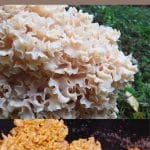
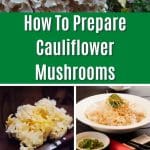
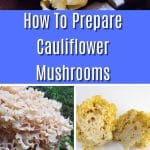


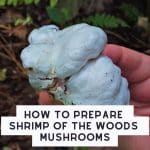


Leave a Reply